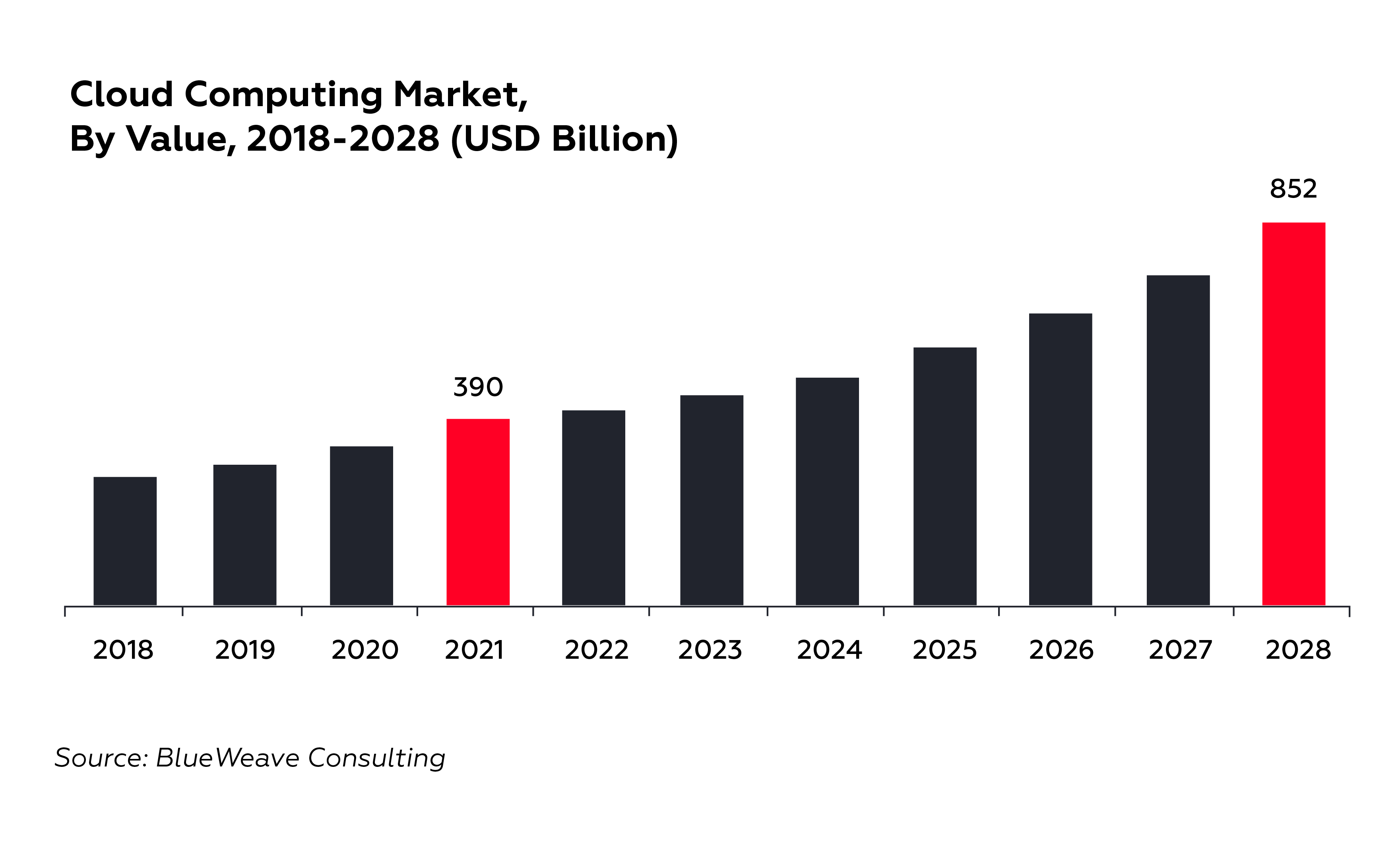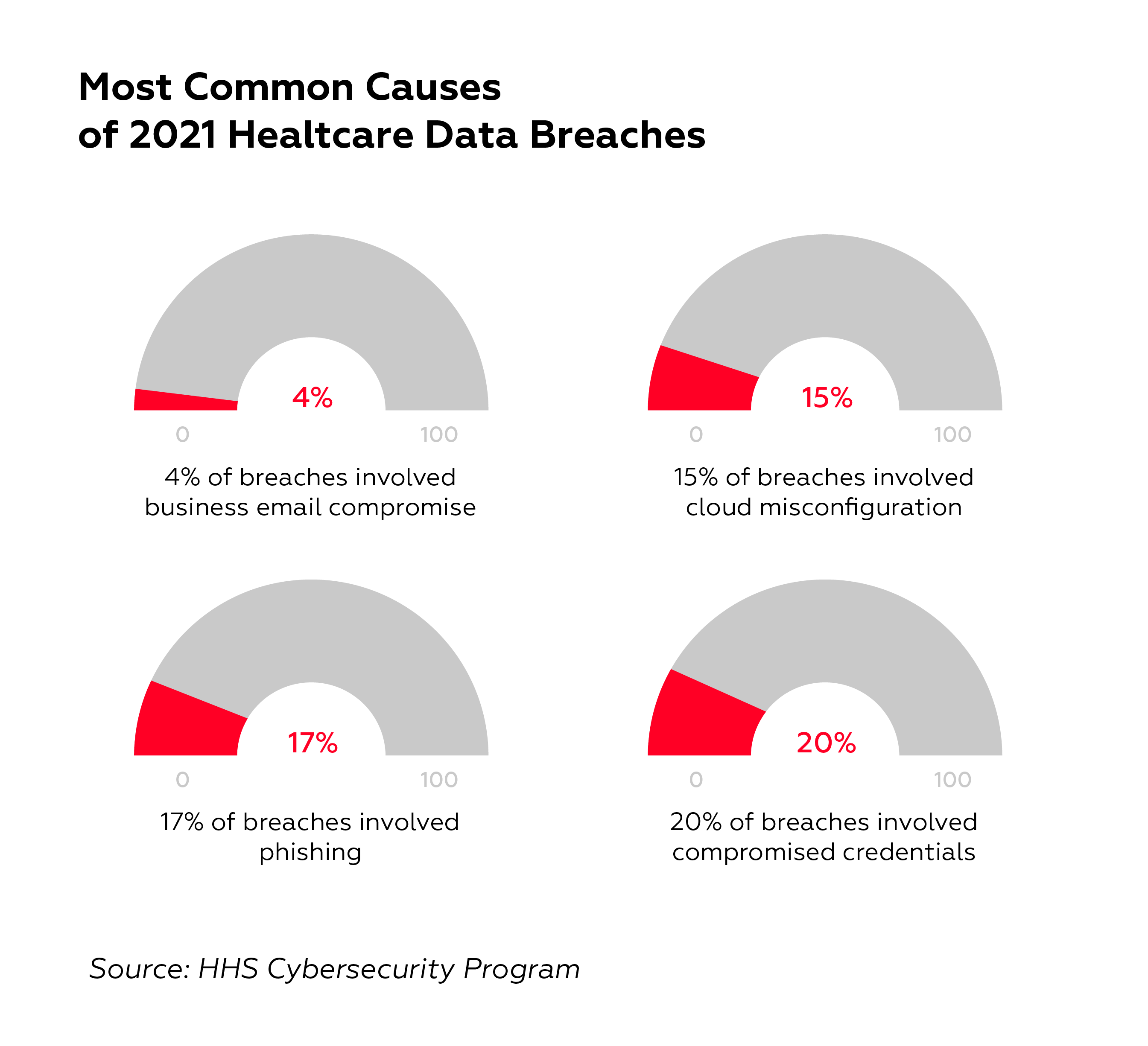Cloud-based EHR: Benefits and Implementation Tips
At this point, the adoption of electronic health records (EHR) has become essential to the majority of healthcare organizations. In 2009 in the US, the federal government announced that it set aside $27 billion for a program that incentivized healthcare providers to adopt EHR. Coupled with the growing accessibility of software development, it wasn’t long until the majority of hospitals started to rely on EHR at least for some hospital service types.
However, at that time, implementing EHR implied that a hospital’s IT staff had to deal with the burden of hardware maintenance and system version upgrades, which made healthcare providers much more reluctant to change. In recent years, the growing popularity of cloud-based solutions significantly impacted healthcare, making EHR adoption more attainable even for the smallest healthcare providers.
In this article, we discuss the benefits of cloud-based EHR systems, outline differences from on-premise EHR systems, and provide crucial implementation tips.

What is cloud-based EHR?
The electronic health record (EHR) is a digital record of a patient’s medical history. EHRs are important because they provide a complete picture of a patient’s health, which can help healthcare providers make more informed decisions about treatment. EHRs can also improve communication between providers and patients, and help to coordinate care. Unlike traditional EHR systems that are hosted on private servers, cloud-based EHRs are hosted on remote servers and accessed via the internet.
Cloud-based vs on-premise EHR
At the first sight, there aren’t many differences between on-premise and cloud-based EHRs. For healthcare professionals with minimal technical background, storing data on the organization’s premises may even look safer and more appealing. However, the deployment choice can significantly influence the platform’s scalability, security, operational costs, and interoperability.
Costs
In any case, adopting EHR is a costly endeavor. However, when it comes to the implementation costs, cloud-based deployment is always a clear winner. On-premise systems require significant upfront hardware and software costs. On top of that, organizations also need to take care of installation and maintenance. Depending on the size of the organization, these costs can accumulate into millions of dollars.
Cloud-based EHR systems, on the other hand, require much less upfront investment. Healthcare providers don’t need to pay for installation, and software licenses, and spend extra resources on system maintenance.
Data security
Data security has always been at the top of the agenda for healthcare organizations. In a nutshell, opting for an in-house EHR system implies that the internal IT staff is responsible for protecting data against cyberattacks and adhering to privacy regulations. Compromising highly sensitive patient data because of IT staff failure is one of the worst scenarios for any healthcare provider.
With a cloud-based EHR system in place, your cloud solution provider is solely responsible for data security, backups, and regulatory compliance. Given that the majority of vendors take data encrypting, risk analysis, and regular software updates very seriously, security risks are generally far lesser. All things considered, in 2021 15% of security breaches happened because of the cloud misconfiguration. This is why healthcare organizations still have to take an active part in ensuring that their patients’ data is secure.

Interoperability
Nowadays, there is growing pressure on healthcare providers to improve interoperability between clinical systems and ensure that patients can access their health data with ease. System interoperability is pivotal to improved care coordination and health outcomes.
On-premise EHR solutions require clinicians to manually share data with labs and other clinicians working at different hospitals, which is often cumbersome and time-consuming. A cloud-based approach to sharing information allows all parties within a specified network to easily access important information, significantly improving healthcare interoperability.
Scalability
When a healthcare provider needs to grow, scaling an on-premise EHR system calls for extra resources for server upgrades and additional hardware, and reconfiguration of a system’s internal network. Cloud-based EHR systems are scalable on demand, meaning that a vendor takes care of all the work needed to accommodate growth.
Reap the benefits of cloud-based EHR with Artezio – Contact us!
Cloud-based vs on-premise EHR in a nutshell
| Cloud-based | On-premise |
| Requires minimum upfront costs, but can become more expensive in the long term | More expensive in the beginning, but can become less costly in the long term |
| Easily scalable and more flexible | System scalability is dependent upon the capacity of the hardware and IT involvement. |
| Cloud vendors take care of regulatory compliance, but healthcare organizations need to double-check their providers | Compliance is the responsibility of the organization |
| Cloud vendors take full control over hardware maintenance and software updates | Healthcare organizations have better control over their infrastructure, but need to spend considerably more resources on hardware maintenance |
| Fully dependent on the internet connection | Can operate without internet connection in most cases |
| The extent of system customizability depends on the provider | Offers more customizability |
| Fast development and deployment times | Long development and deployment times |
So, where is the catch here?
While the aforementioned benefits of cloud-based EHR systems stand true for the majority of healthcare providers, there are a few cases when an on-premise approach may be more desirable.
- First, healthcare institutions with comprehensive IT structures may find the on-premise approach more appealing as it provides enhanced flexibility, allowing organizations to customize infrastructure according to their specific needs.
- Second, cloud-based systems require uninterrupted and stable internet access to function properly. This means that for healthcare organizations with poor or unstable internet access, the on-premise solution may be a more feasible choice. Additionally, while most vendors take system uptime very seriously, it’s hard to insure against risks associated with unpredictable situations causing internet disruptions.
- Third, it’s important to realize that while upfront costs of cloud-based EHR system implementation are considerably less, these expenses may be greater in the long term as most vendors charge monthly fees. On top of that, cloud EHR providers can charge additionally for customization and storage expansion, which is why healthcare organizations need to outline their immediate and future EHR needs, and choose a vendor wisely based on that.
Tips on migrating to the cloud-based EHR
Cloud migration roadmap is different from organization to organization, but there are definitive steps that any healthcare provider can take to make the transition as smooth as possible.
Strategizing and choosing the vendor
Vendor selection comes down to developing a clear picture of EHR migration objectives. While most cloud service providers would offer comprehensive migration advice, it’s critical for organizations to assess the current state of their EHR systems and define EHR system needs in terms of security, accessibility, performance, and scalability.
Most importantly, organizations need to be thorough when it comes to adherence to HIPAA, regulatory compliance, and data security overall. It’s the responsibility of healthcare organizations to hold their cloud service providers accountable for adhering to specific rules regarding personal healthcare information and health data security.
While certain operational and management aspects of data privacy and security is handled by cloud service provider, the final responsibility for compliance always rests with the healthcare organization. The majority of known cloud providers including AWS and Azure go through industry standard certifications and attestations to help their customers to comply with respective regulations. In other words, signing with reputable cloud service provider that offers legal agreements like AWS Data Processing Agreement and Business Associate Addendum significantly simplifies regulatory compliance, but doesn’t completely alleviate the regulatory burden.
For example, AWS specifically states that the responsibility for security is shared between AWS and the healthcare organization. In simple terms, AWS is responsible for physical security of storage infrastructure, and the customer is still responsible for managing security of the applications and data residing on the cloud.
Preparing data
More often than not, cloud migration reveals significant data governance issues. Given that many healthcare organizations have been holding on to legacy EHRs for decades, establishing appropriate data governance standards has never been a priority. Revealing and dealing with data inconsistencies is a complex, yet crucial undertaking on your EHR cloud migration journey.
Creating a migration team
While your cloud vendor will take most responsibility for cloud migration, it’s important to assemble a dedicated cloud migration team that is familiar with all the intricacies of your current EHR infrastructure and business processes as a whole. This team will also be responsible for helping existing clinicians become familiar with the new system.
Afterword
As we’ve seen, cloud-based EHR offers many advantages for healthcare organizations working to move towards digital transformation. By reducing infrastructure costs, increasing flexibility and scalability, and improving disaster recovery capabilities, cloud-based EHR is a strategic investment that can help your organization meet its long-term goals. If you’re considering making the switch to cloud-based EHR, contact us today to learn more about our products and services.
Looking for a reliable cloud migration companion?
Artezio is ready to help – Get in touch!

